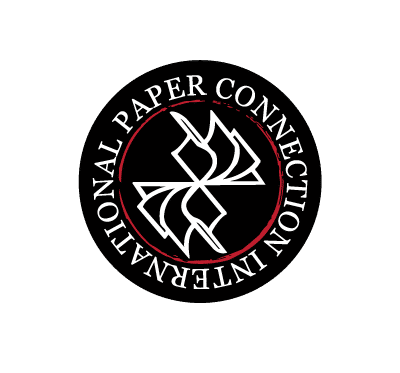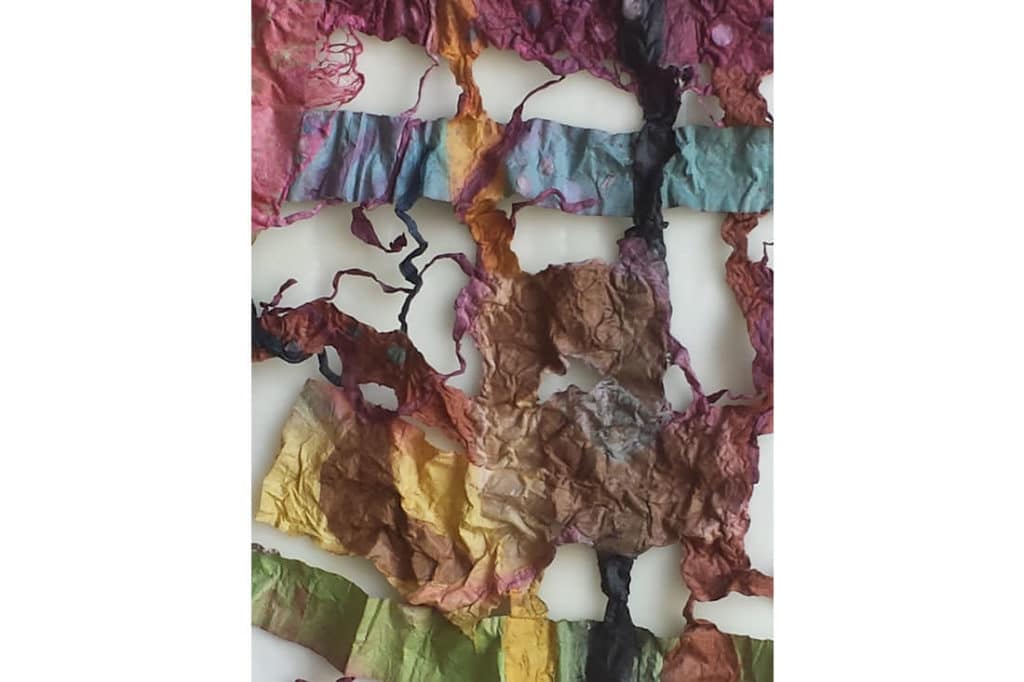Hanji or Korean paper is one of our most popular handmade papers. Hanji is used in a traditional craft called joomchi, a kind of felting of different paper sheets together to create a wonderful effect; organic shapes in rich colors spring to life from an otherwise flat sheet of paper.
Hailing from Colorado, PJ Bergin has feasted her eyes and hands on hanji, springing her inspiration and creative talents to life, with this paper. We have yet to meet PJ in person, but we enjoy corresponding and had the pleasure to get to know her via this interview. We know you will too:
PCI: Please tell us a bit about your background, and what kind of artwork you do.
PJ: Since I can remember, creating objects and items to wear with textiles and other types of fibers has been an innate obsession. I started making clothes for my dolls and myself about the age of 5. After graduating from FIT in Manhattan, I started and grew a successful business installing European Wall Upholstery that took up a lot of my early adult life. Designing and working with my hands came easily to me and a passion. I am now full time studio artist, since selling the business 10 years ago. My first medium was felt and now, for the past two years, am focusing on Korean mulberry paper, also called hanji.
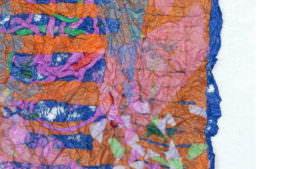
courtesy of PJ Bergin
PCI: Your background in textiles and your interest in hanji is quite interesting. What inspired you to work with paper?
PJ: The medium of Hanji continues to let me work with my hands by shaping and fusing it. Getting my hands “in the goods” is an important part of the creative process for me. Also, I was looking for a fibrous surface that was smooth enough for painting. I can do this on Hanji.
PCI: When were you introduced to Korean paper?
PJ: I attended a workshop with Jiyoung Chung in 2015.
PCI: She is such a pioneer for Hanji and Joomchi, which we hope you can elaborate on. When and where did you learn Joomchi and what are some of the challenges you encounter?
PJ: The workshop with Jiyoung Chung opened many doors for me with the technique of Joomchi and facets of mulberry paper. There are some similarities to working with the paper and my previous experiences with wool. The paper also reacts well when wetted to fuse different layers and colors. This technique, called “Joomchi” creates various texture and dimensions. The new challenge while working with the Hanji is that when it is wet it is quite fragile. Caution is the key when starting out on a new piece.
PJ’s Process:
PCI: Please describe your process and how handmade paper is involved.
PJ: I usually have a particular effect, or plan for the finished artwork before I begin. To that result I cut the Hanji in different colors, and arrange the pieces in the pattern that is pleasing to my eye. After much scrutiny to the design and layout, I start to get the hanji wet to the fusing process. Sometimes the fusing process can go quickly, other times, depending on the design, it can take longer. After the pieces are fused, I can begin to scrunch the entire piece for texture and visual interest. This is the beauty of working with hanji.
PCI: What are some of the characteristics of Hanji that enable you to achieve the desired results you have in mind? Why do you like it as your go-to paper?
PJ: As described above, hanji lets me, as the artist, manipulate it and control the process. The colors will sometimes blend together during the fusing process to create new colors. This is usually unplanned (not controlled!), but lends even more depth and interest to the finished artwork.
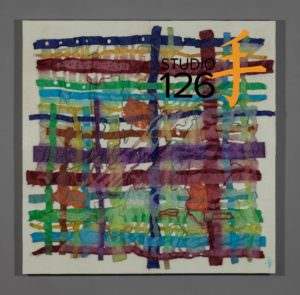
PCI: Are there any comparisons to textiles and fabric?
PJ: I have a lot of experience working with textiles. In my opinion, there is not much similarity with Hanji to textiles. I think this is one of the reasons I am enjoying working with it so much. There are so many areas of new discovery! It is very different from the mediums I have worked in terms of creativity and flexibility.
PJ & PCI
PCI: How has Paper Connection helped you navigate through this world of kozo or dak paper, (mulberry paper), hanji, and other Eastern papers?
PJ: Lauren and all those who work at Paper Connection have been very helpful to me as I build my studio career with Hanji and the Joomchi technique. Whether it is a time when I am looking for a particular color of the hanji or have a question about the texture of a certain paper, there is always someone who will take the time to speak with me. It is easy to navigate the Paper Connection web site to find papers I want.
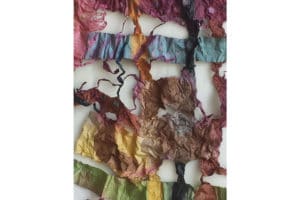
courtesy of PJ Bergin
PCI: Thank you so much, we enjoy helping out any way we can! What handmade paper would you recommend for fellow colleagues or students who are in your field and why?
PJ: The hanji and kozo papers come in a wide variety of colors and are great to work with. They are very versatile. I also find many very lightweight and sheer papers easy to fuse onto the hanji, even though they are not made from the mulberry fiber.
PCI: What advice would you give to fellow paper and/or fiber artists who may be just starting out?
PJ: Have a lot of perseverance and patience. Believe in what you are doing and listen to your own mind. Set goals and do your best to keep them.
PCI: That is so true, and much appreciated. We hope novices take it to heart, no matter what age it is that one starts! Our famous question, if you could choose any artist to have over for dinner and conversation, who would you choose and why?
PJ: This is an easy answer for me. My guest will be El Anatsui. He is the artist who lives and works in Nigeria and makes large, dynamic tapestry from disused bottles caps and other remnant pieces of metals. The metal pieces are then connected with wire into the tapestry that shine and glow like large jewels. Each one is fascinating, with its own character and different from the last. I can spend hours looking at them. His work is inspiring to me because this is the goal I have for my work. Each time a person looks at one of the joomchi pieces I create with the mulberry paper, I want the person to see something new. Either it is because of the way the light is hitting the artwork or because of the unique nuance of the mulberry paper itself.
PCI: PJ, we love it. Thank you so much for taking the time to answer our paper questions. We hope to meet you in person.
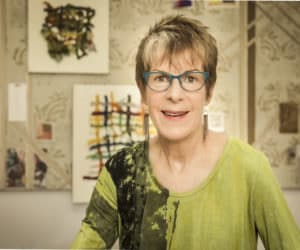
Check out PJ’s blog to see what’s she working on now.
Follow PJ Bergin’s Facebook, Instagram, and Pinterest for more information and inspiration.
